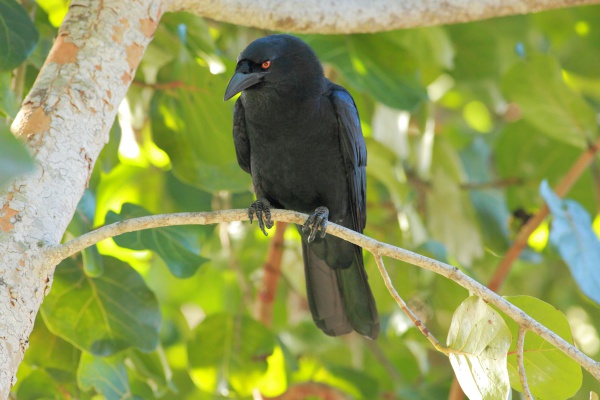Facts About White-necked crow
The white-necked crow stands out as the largest among the four crow species found in the Caribbean. It shares many physical traits with its close relatives, the Cuban crow and Jamaican crow, while the palm crow appears to have arrived later and is more akin to the fish crow of North America and two species from Mexico.
This robust bird is native to the island of Hispaniola, which includes both Haiti and the Dominican Republic. Historically, it was also found in Puerto Rico, but deforestation and hunting have driven it out from there. The white-necked crow inhabits both lowland and mountain forests, though, unlike the Cuban crow, it does not adapt well to cleared agricultural areas. It’s quite a spectacle to see them flying high above the forest canopy, often soaring on thermals.
With regards to size, the white-necked crow is the heavyweight of Caribbean corvids, measuring about 42-46 centimeters in length. It flaunts a sleek black plumage with a bluish-purple sheen, a gently curved black bill, striking crimson red eyes, and black legs and feet.
The crow’s diet predominantly consists of fruits, but it also consumes invertebrates and small vertebrates like toads and fledgling birds. While not much is known about their breeding habits, it is understood that they build solitary nests high up in tall trees.
What truly sets the white-necked crow apart is its distinctive voice. Unlike typical crows, it has a parrot-like call that combines liquid bubbling sounds, squawking, and babbling, along with both sweet and harsh notes reminiscent of a common raven.

 Dominican Republic
Dominican Republic